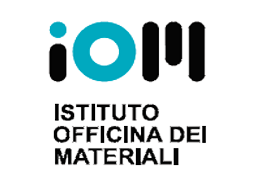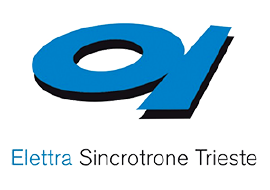FACILITY AT NFFA-TRIESTE
A cluster of UHV chambers that can exchange samples for growth and structural, chemical, magnetic and electronic analysis is available for users projects. The cluster is composed by 3 different chambers: 2 MBE chambers (Oxide and Mask) and 1 XPS station. The MBE cluster growth facility is located in the area of the APE beamline inside the experimental hall of Elettra, is not directly connected with the APE-NFFA end station but can exchange samples via a UHV shuttle chamber maintaining the samples in 10-10 mbar pressure.
Complementary facilites at the co-located IOM-TASC clean-room are available for integrating lithography in the sample fabrication, in particular for "in-operando” type experiments.





The MBE-Oxide chamber is designed for the growth of complex oxides in pure ozone or oxygen as oxidizing ambient. The growth chamber is equipped with in-situ noninvasive measurement of atomic fluxes in real-time for single component materials (quartz crystal monitor) and for multi-component compound (atomic absorption spectroscopy). The deposition of individual monolayers is monitored by in situ reflection high energy electron diffraction (RHEED) system.
The MBE mask chamber allows for metal and simple rock-salt oxide depositions (masked or mask-less). The chamber is equipped for the standard tools for sample preparation in UHV conditions (sputtering with Ar ions, annealing stage by e-beam bombardment, quartz microbalance, leak valve for gas inlet and e-beam evaporators). Moreover the chamber is equipped with a shadow mask system that allows the direct evaporation of patterned film of micrometric size. In the chamber an AES/LEED system allows structural and chemical characterization. Together with the sample deposition tools, the MASK chamber is equipped with an in-situ MOKE apparatus (see MOKE section) for azymuthal Kerr magnetometry in UHV with fields up to 0.55T and temperatures in the range from 5 to 500 K. Finally, thanks to a 2 contact sample-holder, it is possible to measure transport properties (I vs V curve and magnetoresistance) of thin films and junctions.
The XPS analysis chamber is equipped with a double anode (Mg,Al) x-ray source and with a electrostatic hemispherical analyzer (mean radius 200 mm) to permit XPS measurements (see lab-XPS section). The samples can be transferred in situ from the MBE chambers or can be directly introduced from the nearby load-lock chamber. In-situ with sputter/annealing surface treatments are available.
MATERIALS DEPOSITED BY MBE
|
Ultrathin Layers on Surfaces
|
|
|
3d, 4d, 4f metals
|
Ferromagnetic metals
|
|
organic molecules
|
Moleculer magnets
|
|
MgO, Al2O3, NiO
|
Insulationg Oxides
|
|
Metallization and masked deposition
|
|
|
Au, Pt
|
Conductive metals
|
|
Perovskite structure compounds ABO3
|
|
|
(La-Sr)(Co-Cu-Ti-Zn)O3
|
Conductive
|
|
(Ba-K)(Cu-Bi)O3
|
Superconducting
|
|
(Ba-Sr)(Ti-Zr)O3
|
Di-/ferroelectric
|
|
(La-Ba)(Mn-Fe-Ni-Co)O3
|
Ferromagnetic
|
|
Bi(Fe-Mn)O3
|
Multiferroic
|
|
Spinel structure compound AB2O4
|
|
|
ZnFe2O4
|
Antiferromagnetic
|
|
Fe3O4
|
Ferromagnetic
|
ONGOING RESEARCH
The Oxide growth chamber is active in perovskite structure compounds deposition, like doped manganites, ferroelectric and multiferroic based thin films and heterostructures. The MASK chamber provides sample deposition and in-situ MOKE characterization in a wide range of temperatures. The two chambers are used in parallel, allowing the magnetic characterization of uncontaminated complex oxides. The sample can therefore be transferred in UHV environment with the shuttle chunk to APE-LE, APE-HE and SPRINT laboratories. Thanks to the clean room facility at TASC the 2D samples will be structured by lithography in order to obtain prototypes of functioning devices. The system also permits the characterization of the electrical transport properties of a device.

Scheme of the double junction circuit obtained on Fe/MgO/FeGa multilayers by optical lithography




